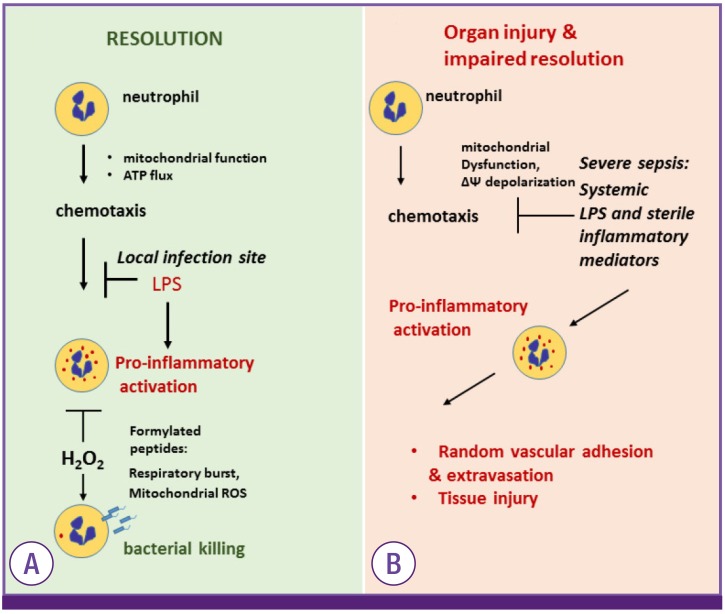Figure 3.
Mitochondria plays a crucial role in regulating neutrophil function.
(A) Mitochondrial function in the leading edge supports neutrophil chemotaxis. In infection site, LPS-TLR4 engagement indices mitochondrial depolarization and subsequent inhibition of neutrophil motility and promote pro-inflammatory action. Pro-bactericidal effects are activated by NADPH oxidase activation. Notably, H2O2 is important to bacterial killing and promote neutrophil transition from pro-inflammatory to anti-inflammatory phenotype. (B) Severe sepsis and shock is characterized by accumulation of bacterial products and DAMPs in circulation. LPS inhibits neutrophil chemotaxis and promote pro-inflammatory activation flowed by random adhesion to endothelial cells. Neutrophils extravasation and activation is implicated in tissue injury.
ATP, adenosine triphosphate; TLR, Toll-like receptor; LPS, lipopolysaccharide; NADPH, nicotinamide adenine dinucleotide phosphate; DAMPs, damage associated molecular pattern proteins.

